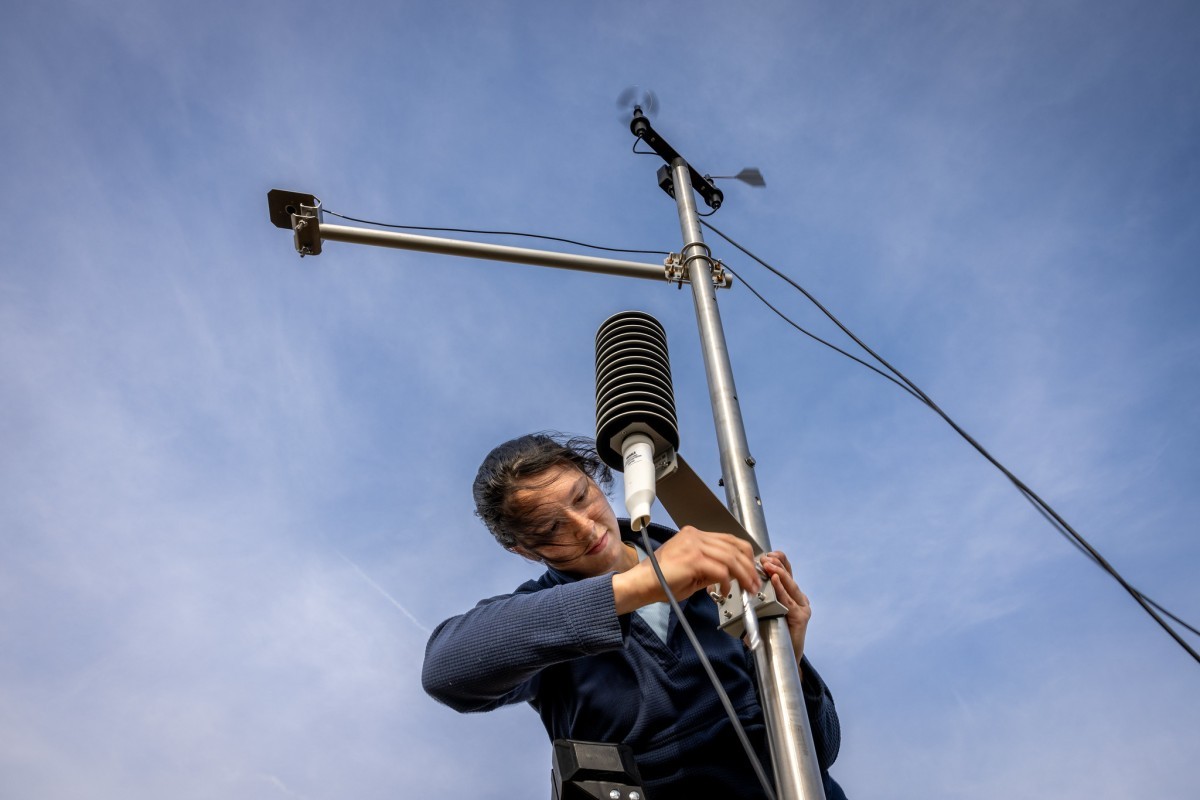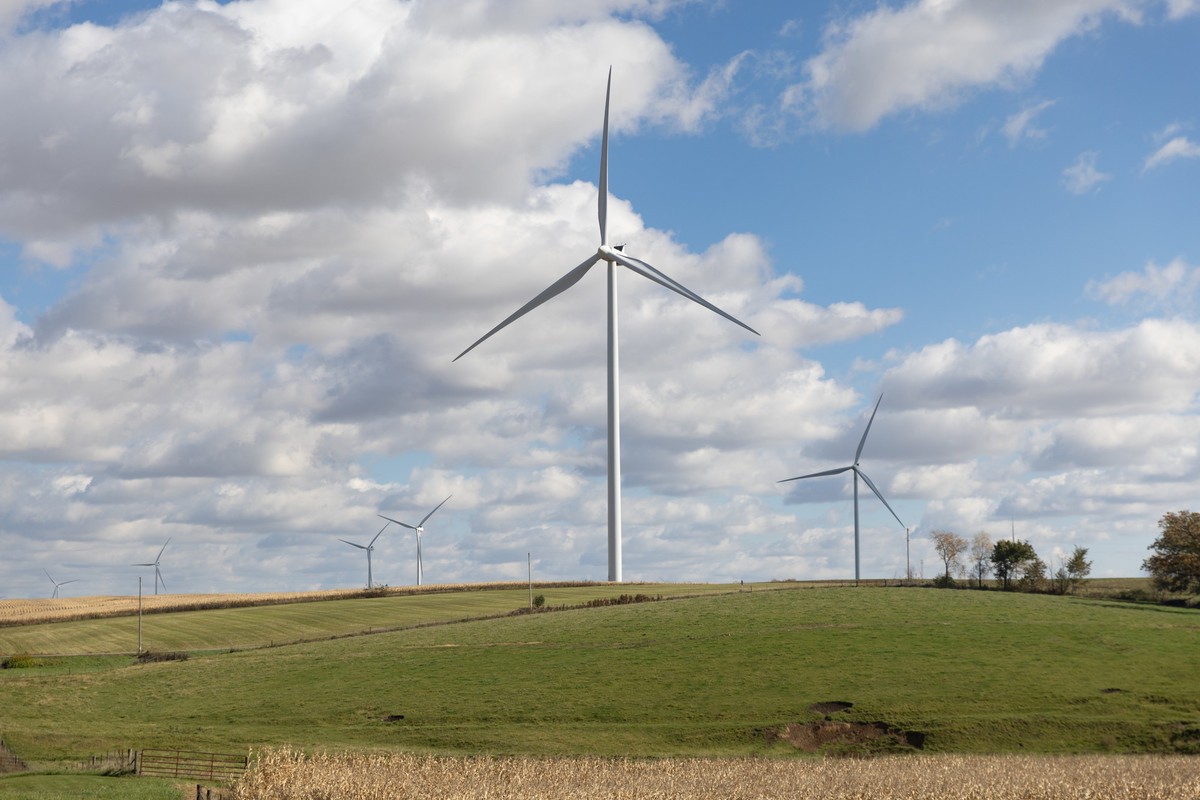Plus energy impacts of the 'Big Beautiful Bill', and the prospects of new gas and nuclear generation in Wisconsin

It's been a busy month for Wisconet, the new statewide network of weather and soil monitoring stations.
The project, supported by the Institute for Rural Partnerships and housed in the Wisconsin Energy Institute, recently launched a new website where stakeholders can find real-time data on weather conditions throughout Wisconsin.
The site includes dozens of maps and dashboards to help users make informed decisions.
“We wanted to turn the data from Wisconet into support tools for Wisconsinites; our new website is the result of those efforts,” said Wisconet program manager Chris Vagasky. “The most exciting thing about the new website is the speed at which it updates."
Unlike other apps, which update conditions once or twice an hour, the Wisconet website updates every 10 minutes with data from dozens of stations collecting dozens of measurements — from air temperature and wind speed to precipitation and even temperature and moisture levels three feet below the ground.
The website also incorporates data from other government sources, including the National Weather Service and Wisconsin Department of Natural Resources.
Wisconet has installed 61 stations and plans to install another 19 this year, ensuring at least one station in every county.
The program was also highlighted in a recent story by the UW–Madison Office of Sustainability.
Vagasky, who studies lightning in hurricanes and trains other meteorologists, recently published an essay on the importance of accurate hurricane forecasts in The Conversation, a news outlet that features easily understandable articles written by academics.
The National Hurricane Center's 2024 forecasts were the most accurate on record, and Vagasky points out that today's forecasts are about 75% more accurate than those from 35 years ago.
Today's three-day forecasts are about as accurate as one-day forecasts were in 2002, Vagasky notes, meaning people in the storm's path have far more time to protect their property and move to safety.
But with academic and federal forecasters predicting an especially active 2025 hurricane season, Vagasky warns that staffing cuts and threats to funding at NOAA could leave meteorologists with less of the data they need to nail those forecasts.
The cuts would affect three programs that provide vital information: weather balloons that measure wind speeds in the upper atmosphere, "hurricane hunters," who fly into tropical storms, and academic partners, including UW–Madison, that develop software and methods to analyze satellite data.
With coastal populations growing as the nation faces more intense storms, Vagasky notes, "cutting funding and staff from NOAA’s work that is improving forecasting and warnings ultimately threatens to leave more lives at risk."
In other news this week...

House bill guts clean energy support
You may have heard that the House of Representatives narrowly approved a big spending bill this week.
It will take a while to unpack all the policy changes, which could face some revisions in the Senate, but the upshot is that the bill would "gut federal support" for clean energy, according to Utility Dive.
The bill essentially eliminates tax credits for clean energy and storage technologies, which analysts with Jefferies investment back likened to "taking a sledgehammer" to the Inflation Reduction Act.
Technically, the technology-neutral credits would be kept in place for projects that come online by 2028, provided construction begins within 60 days of the bill's passage. Keep in mind that it takes years to get approval to connect to the grid, and construction delays are pretty much the norm.
Combined with tight restrictions on use of materials from countries including China, which dominates the clean-energy supply chain, the bill would make it virtually impossible for any project to qualify.
Renewable energy stocks plummeted Thursday, with residential solar company SunRun losing 38% of its value.
The bill did include some last-minute carveouts for the nuclear industry, extending tax credits for advanced nuclear projects and uprates of existing reactors that begin construction by 2028. But with the long lead times for these type of projects it's unclear how many could qualify.
Princeton University crunched some numbers to calculate the bill's impacts. The results are not pretty. Besides increasing greenhouse gas emissions by more than 1 billion tons per year, it would also add about $50 billion per year in energy costs for U.S. residents and businesses (both by 2035). Electricity rates are expected to rise, while the average household energy bill will grow by $270 to $415 per year.
Rhodium Group estimates the bill could jeopardize up to $500 billion in manufacturing, industrial, and clean energy investment. And, ironically, it will result in increased petroleum imports while only boosting domestic production by about 1%.
For a full rundown, check out Heatmap, which has consistently owned coverage of the fight over energy policy.
Investing in fossil gas
Wisconsin regulators approved plans for the state's largest utility to invest roughly $1.5 billion on gas-fired power plants.
That will go to build a 1.1 gigawatt plant in Oak Creek to replace an aging coal-fired plant and a smaller peaker plant in Kenosha County.
Together those plants are expected to pump nearly 2 million tons of heat-trapping gasses into the atmosphere each year.
On one hand, that represents about 75% less emissions that continuing to run the current coal-fired plant. On the other hand, that's 2 million tons more pollution than what scientists say we can afford without seriously harming the planet.
Don't forget about the "big beautiful bill" that just landed in the Senate: Rhodium analysts say increased demand for natural gas to meet growing electricity demands will drive up prices, which translates into cost hikes for both electricity and home heating.

We Energies says the generators are needed to meet expected load growth from new data centers while maintaining reliability, which seemed to resonate with regulators.
Nuclear phoenix
Just three years after buying a shuttered Wisconsin nuclear plant in order to tear it down, a Utah company is pursuing plans to rebuild on the site.
EnergySolutions, which is managing the decommissioning of the Kewaunee Power Station, announced last week that it intends to apply for a permit to install new generation with the intent of selling power to Wisconsin Public Service.
The company isn't proposing to restart the 560-megawatt plant, which operated from 1974 until 2013, when Dominion Energy shut it down citing economics.
EnergySolutions hasn't specified what type of technology it might deploy at the site, though a company spokeperson told Wisconsin Public Radio that it is looking to expand the site's footprint.
Federal regulators are evaluating a request by the operator of Wisconsin's only remaining nuclear plant, Point Beach, to keep the 1,200-megawatt plant running through 2050.
